Cross Row Tunes
Cross Row Tunes for the 20 or 30 key anglo are tunes that are played with fingering that crosses rows. This might, for example, be a tune in the key of C that is played mostly on the C row but has an excursion to the G row for in incidental F#.
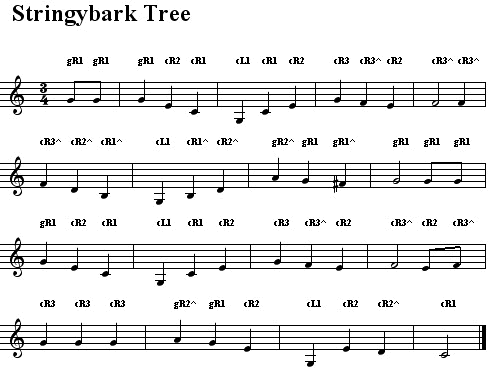
For cross row tunes we need to add a layer of complexity to the fingering notation to indicate which row is used.
Hence cR2 means play on the C row, on the Right side and use the second button on the push.
Similarly gL3^ means play on the G row, on the Left side and sound the third button on the pull.
Stringybark Tree is a song collected from Herb Tattersall of Gulgong by John Meredith. The same tune is used for Oh Bedad Then Says I. Both songs are found in Folk Songs of Australia.The choice of G note fingering (either cR3 or gR1) is not slways critical, so use what feels most natural to you.
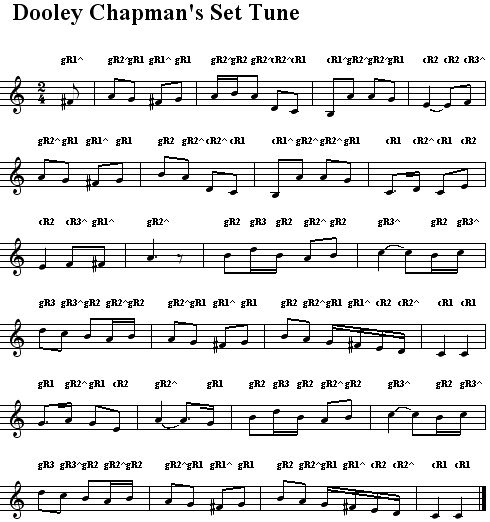
Same finger/ button correspondence as the last tune, but with the little finger included on the fourth button.
Some players avoid using the little finger due to its generally being weaker than the other three. However, perseverance will give the finger the strength to be used effectively. (Finger tapping exercises that make the little finger work harder may help.. be patient)
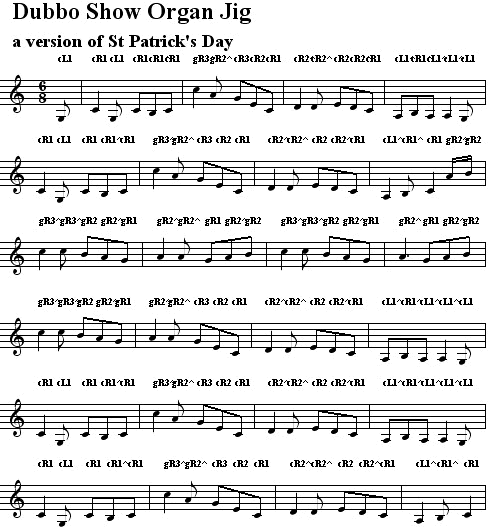
Another tune from concertina player Albert Dooley Chapman and recorded by Chris Sullivan.
Dooley heard the tune played by an organ grinder at the Dubbo Show and went home and picked it out on the concertina. It is a version of the Irish Jig St Patrick's Day, that Dooley played ABABA.
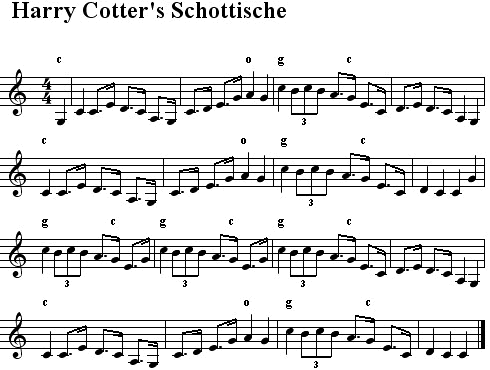
Assuming that you are more used to the fingering of the instrument I am simplifying the fingering guidance to a simple indication of which row to use.
Some folk use a two colour highlighter code to show the two rows, a useful method which can be applied to any other written music.
Harry Cotter from Binalong was a fiddler and button accordion player with a good repertoire of dance tunes and songs. Colin McJannet recorded his music, including this version of Off to California. The repetition in the g to c row part lets you put in plenty of rhythm.
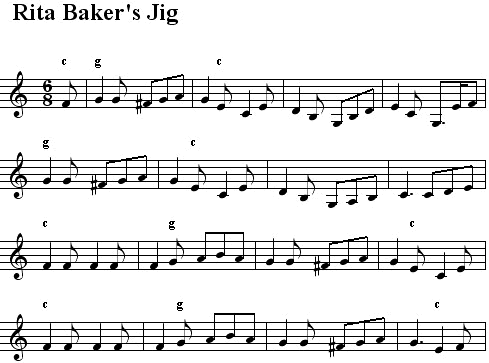
With the f notes all played as f natural this tune would be quite ordinary. The cross-rowed f sharps give it a distinctive concertina sound. If you remember that all the g notes on the second line of the staff are played on the g row the tune will flow nicely.
Played by Rita Baker for the first figure of the First Set, this tune was collected by John Meredith in 1981. Rita, John acknowledges, inspired him to begin the second wave of collecting that he subsequently undertook.
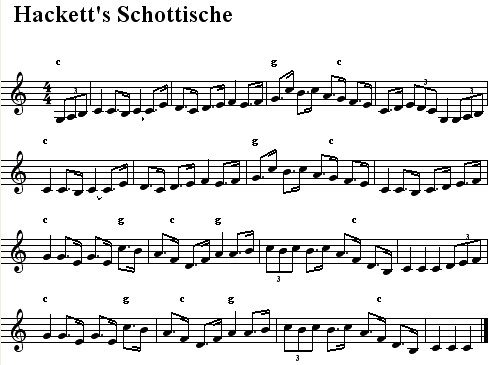
A nice schottische from the playing of Darryl Cosgrove, collected by Dave de Hugard. Dave also refers to it as the Pine Tree Flat Schottische.
The repetition in the tune allows for development of a nice lilt.
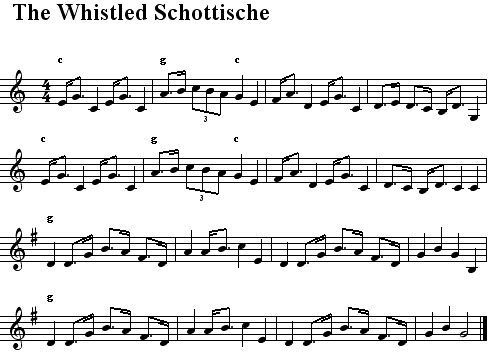
A tune whistled for John Meredith by Rita Baker after several unsuccessful attempts to play it on her fiddle due to arthritis. She had no name for the tune but said that she had learnt it from her mother.
It is quite unusual as a tune in that it changes key midway from C to G which suits the concertina beautifully.
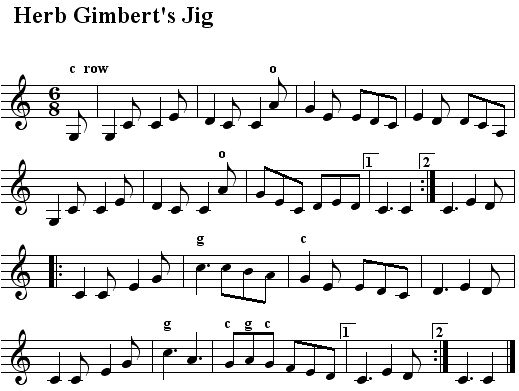
Herb Gimbert used to come to the Bush Music Club in Sydney. I recall his being at a Singabout in George St with an accordion on his lap. He also played the pennywhistle. I learnt the tune from the playing of Jamie Carlin, who was recognised for his many years of dedication with a life membership of the BMC.
The tune can be played single row but flows better with the cross rowing given here.
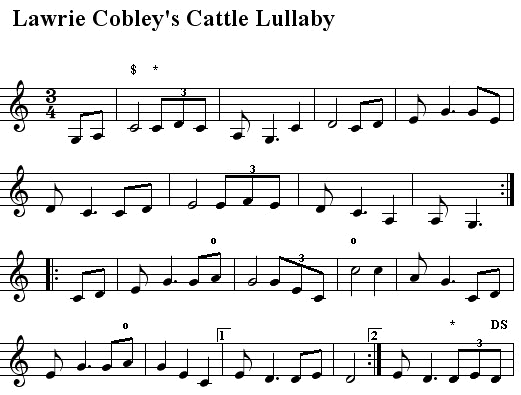
An absolute gem of a tune that wends its way into your head. It has no resolution, cycling on and on. DS is shorthand Italian for go to the dollar sign at bar 1 (no pick up notes)
The tunes noted with an o can be played optionally on either row. The asterisks mark triplets which can be smoothed out using buttons that avoid changing bellows direction. The first is played cR1 gL1 cR1 all on the push and the second is cR2^ gL1^ cR2^ all on the pull.
The tune was collected by Dave de Hugard from ex-drover, Lawrie Cobley who lilted it continuously to cattle at night to keep them settled. Some drovers used a mouthorgan the same way, moving slowly around the mob on a quiet night horse and playing a soothing melody.
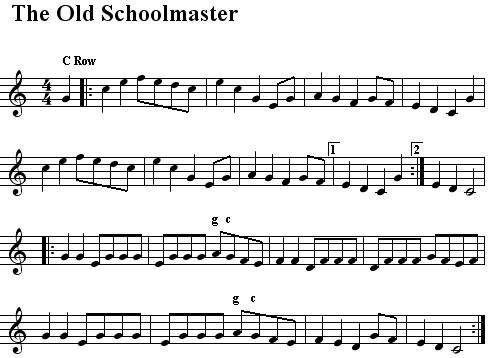
A reel to get the fingers working with the repeated notes in the turn of the tune. The crossing to the g row is really optional depending on the power and speed of your little finger.
This tune comes from the fiddle playing of Tom Walsh who lived in Trentham in Victoria. He was a regular at the sessions at the National Folk Festival in Canberra each Easter.
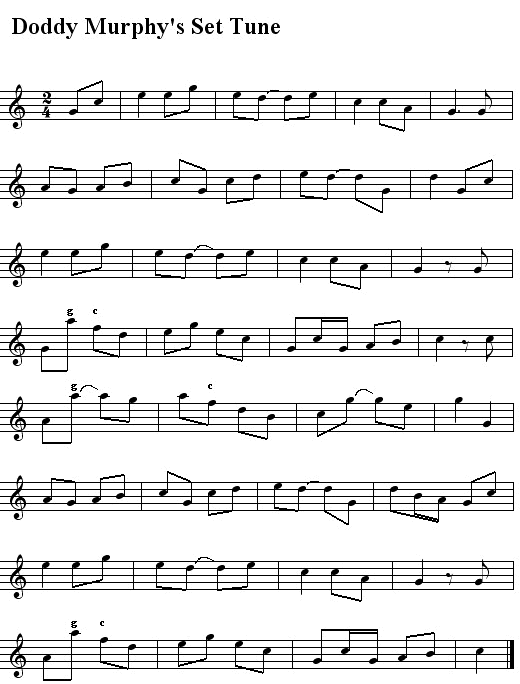
Daniel Doddy Murphy probably learnt this tune from his father Mick who played concertina and wrote and sang songs.
Doddy played this one for the First Set, which was the first of the multiple figure quadrilles that were popular from the height of their fashion in the French court in the mid 1800s right through to the 1960s in some country areas.
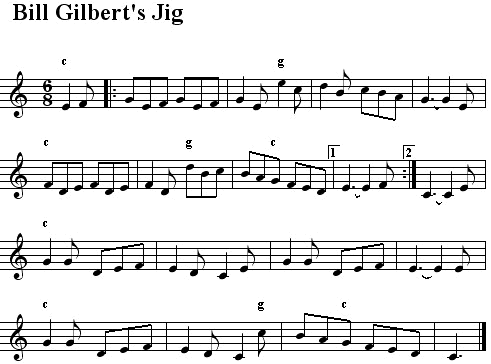
Bill Gilbert played the kind of accordion popular with Irish style players. He had both a two row B/C and a C/C# accordion. This combination gives access to all the accidents needed to play chromatically and seems to suit Irish jigs and reels. Makes one wonder about the possibility for concertina.
The tune was used for a "square dance" as Bill called the quadrilles.
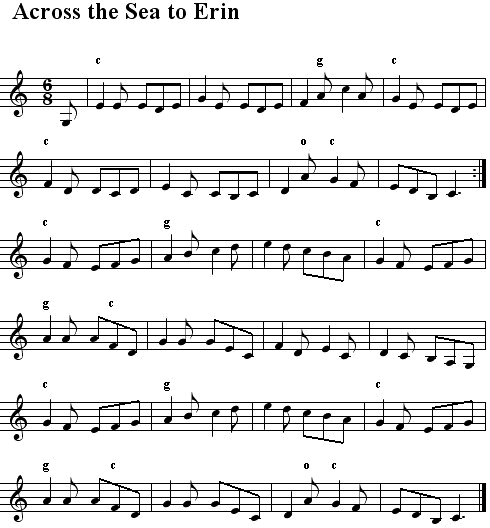
Across the Sea to Erin comes from the Harry Schaefer Collection.
Harry notated the tunes he played on fiddle for dances in the Forbes area where he lived and it was not till relatively recently that they were discovered from his relatives by collector Rob Willis.
This jig fits the concertina with cross-rowing for the higher notes.
